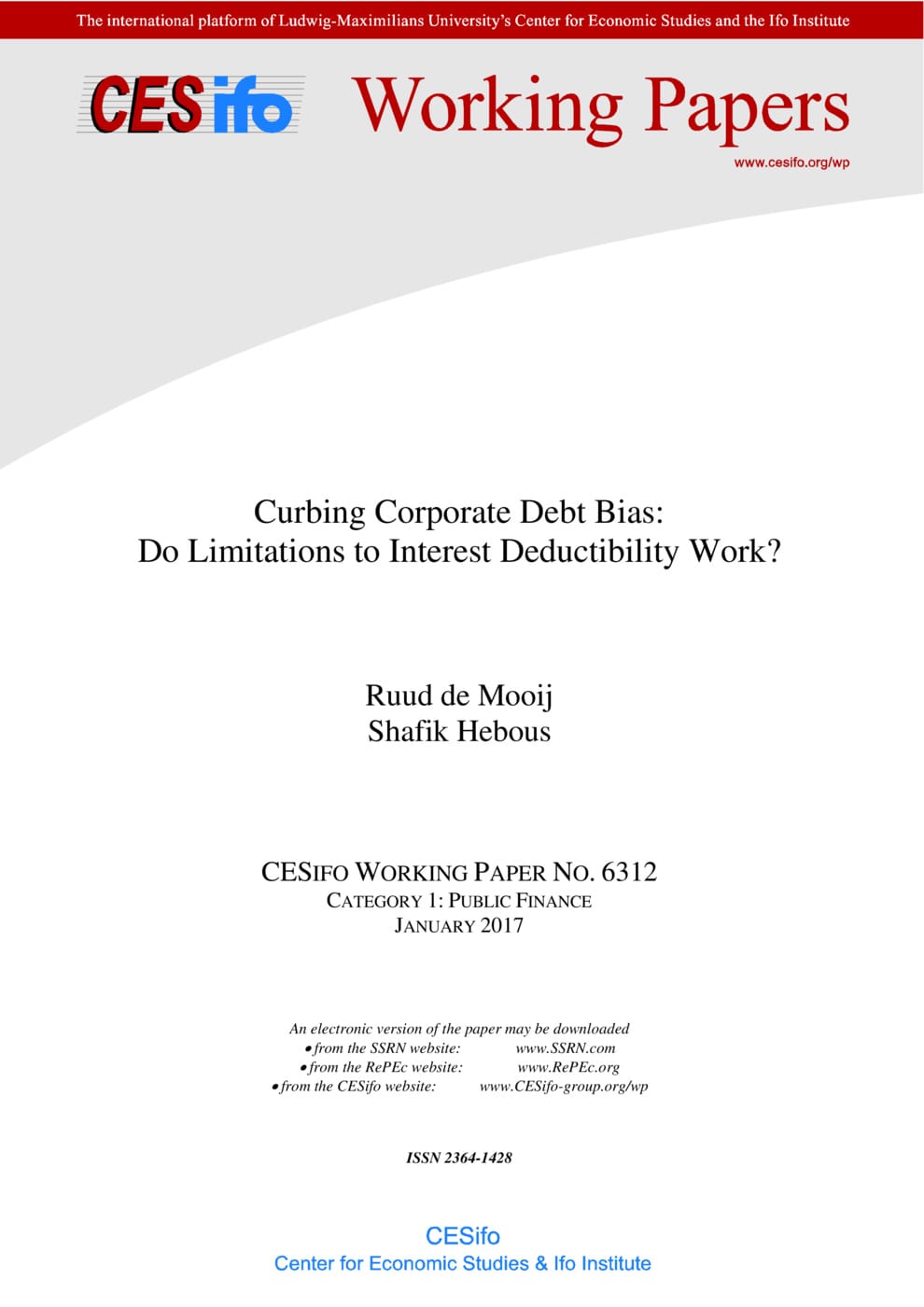Curbing Corporate Debt Bias: Do Limitations to Interest Deductibility Work?
CESifo, Munich, 2017
CESifo Working Paper No. 6312

Tax provisions favoring corporate debt over equity finance (“debt bias”) are widely recognized as a risk to financial stability. This paper explores whether and how thin-capitalization rules, which restrict interest deductibility beyond a certain amount, affect corporate debt ratios and mitigate financial stability risk. We find that rules targeted at related party borrowing (the majority of today’s rules) have no significant impact on debt bias—which relates to third-party borrowing. Also, these rules have no effect on broader indicators of firm financial distress. Rules applying to all debt, in contrast, turn out to be effective: the presence of such a rule reduces the debt-asset ratio in an average company by 5 percentage points; and they reduce the probability for a firm to be in financial distress by 5 percent. Debt ratios are found to be more responsive to thin capitalization rules in industries characterized by a high share of tangible assets.
Public Finance
Fiscal Policy, Macroeconomics and Growth